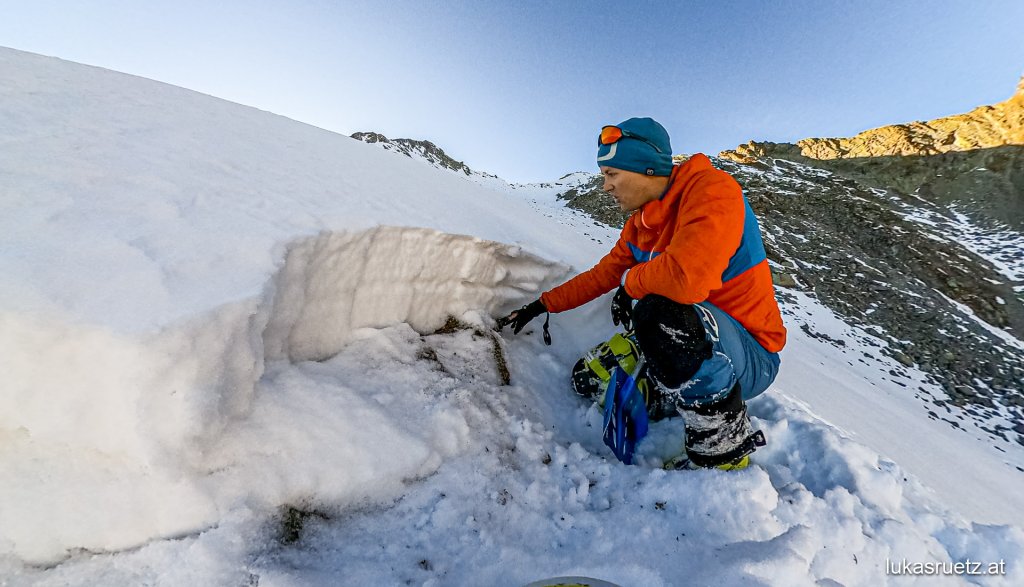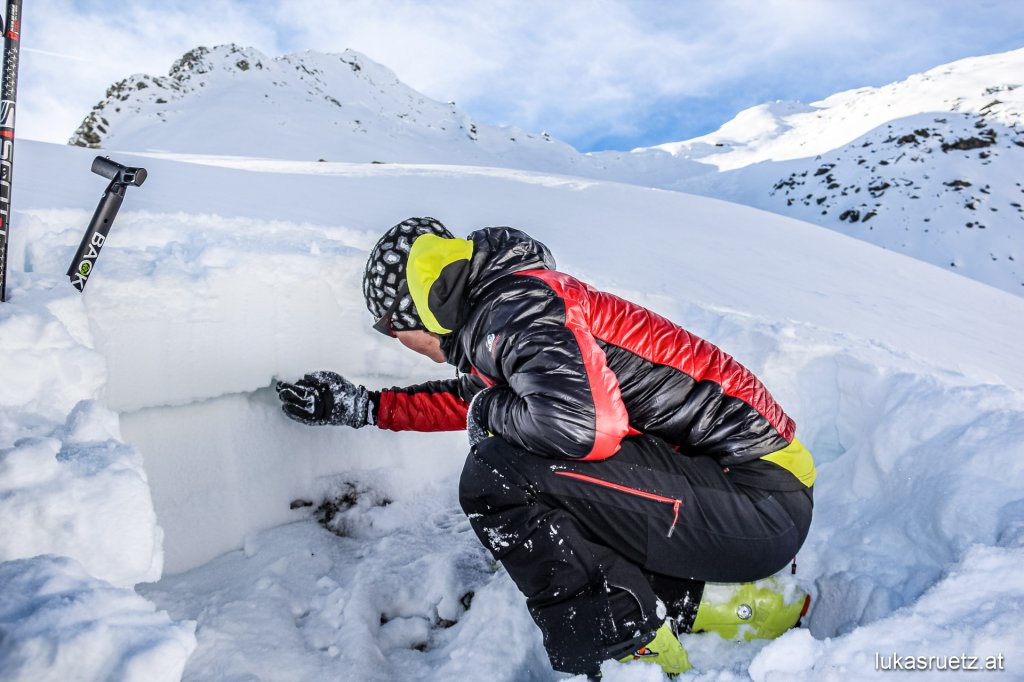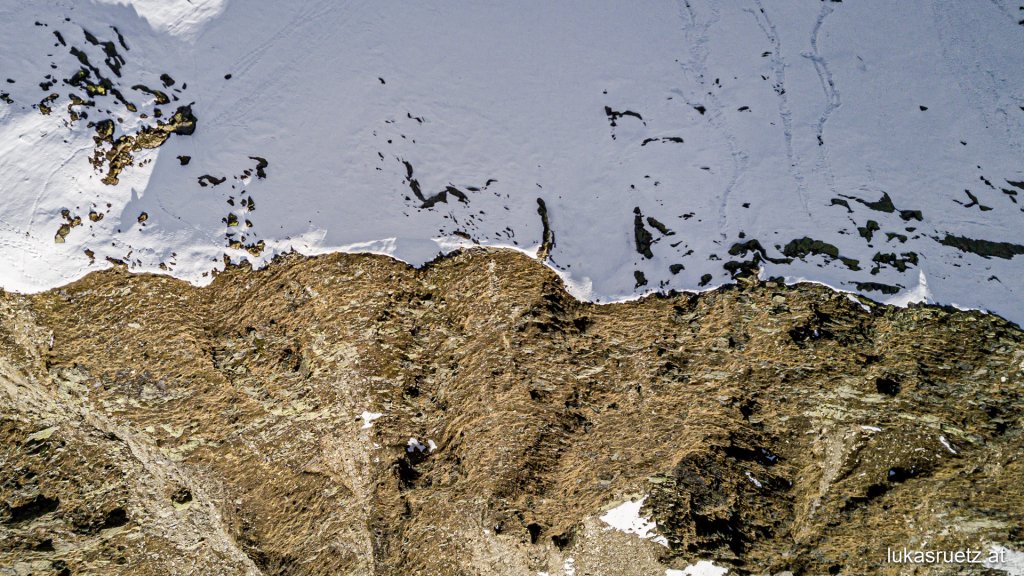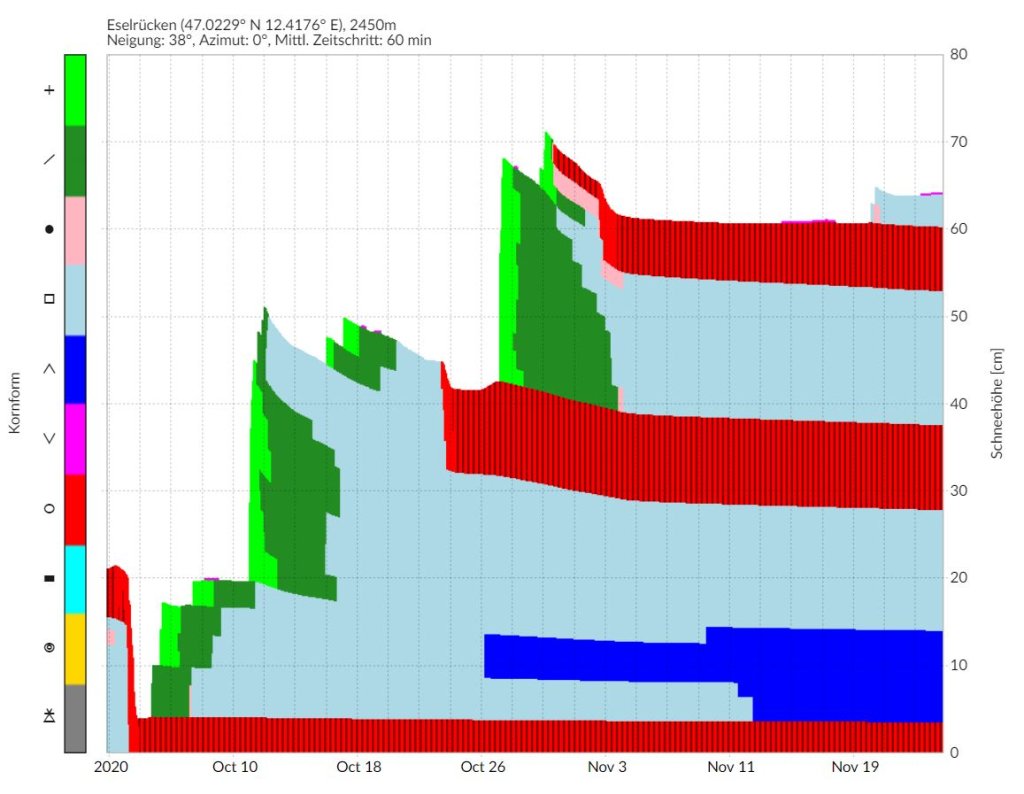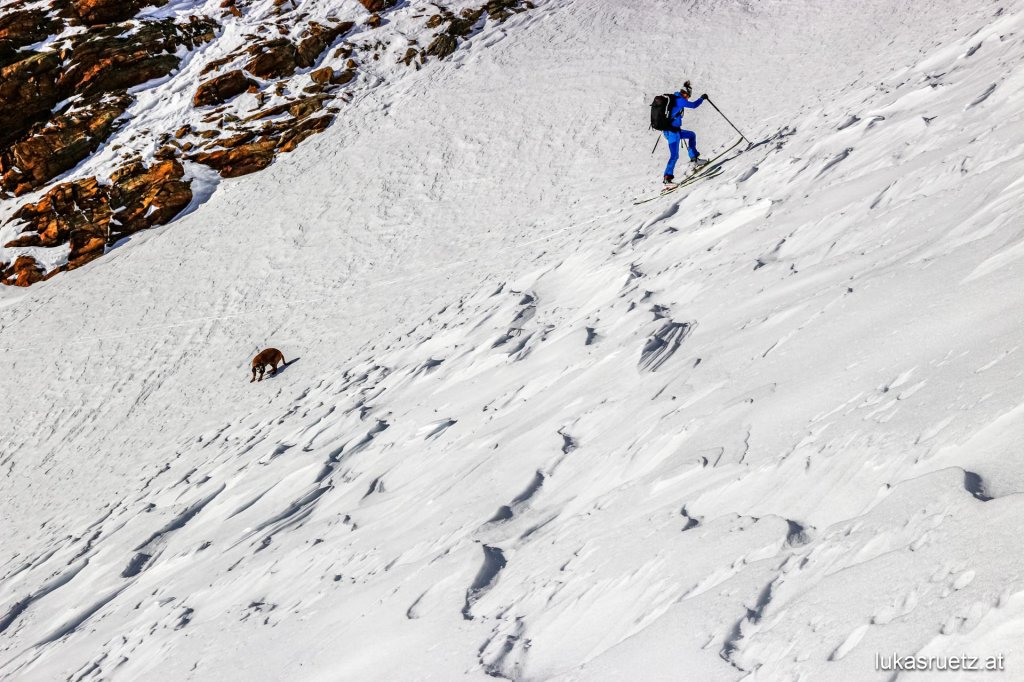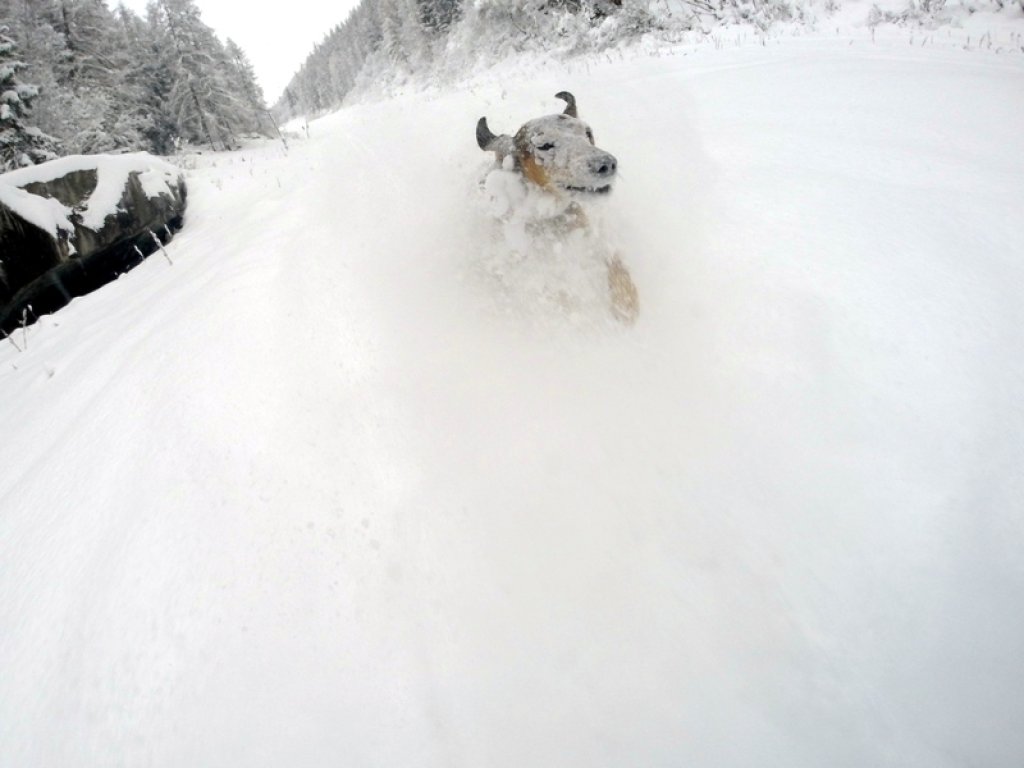Review from the perspective of the snow cover
In the last week of September, there was a significant snowfall right up to the higher valley levels. For many locals, it was the start of the new season with stone skiing on a good-natured surface. This was followed at the beginning of October by a sudden onset of foehn winds and light rain up to high alpine altitudes. In mid-October, there was a second significant fresh snow event followed by a moderate warming. This was followed at the end of October by a third heavy snowfall down to the valleys with half a meter of fresh snow in some places. On November 3, it rained lightly again up to almost high alpine regions and the following day the air remained very warm, foggy and damp. Since then, more or less warm high-pressure weather has prevailed with mostly clear skies and fairly dry air, rarely interrupted by any significant fresh snow.
The warm spells have caused a melting crust to form at the top of the fresh snow. Below this, the snow will remain powdery for the time being or, if already settled, compact. However, the high-pressure weather for just over two weeks is changing the snow cover massively - especially on the shady side where the snow has remained, but also on the sunny side on the high mountains, which are snow-covered in all exposures. On very steep south-facing slopes, melting takes place during the day due to the high temperatures and solar radiation - the snow melts on the surface. At night, the snow surface freezes again, cools down considerably and forms a strong temperature gradient to deeper snow layers. As a result, the build-up transformation takes over at night - even in sunny terrain. However, the melting transformation is so strong again during the day that hardly any or only slightly pronounced, constructively transformed weak layers can form.
